|
|
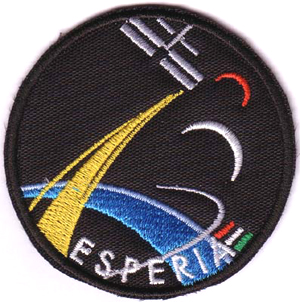
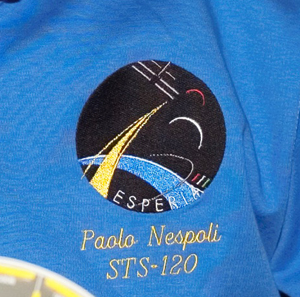
The embroidered patch (left) and the design embroidered on a polo shirt worn by Nespoli during the mission. It is likely this is the only textile version of the design that flew, as the patches were not available at the time of the launch.
| Mission |
In June 2006, Nespoli was assigned to the Space Shuttle mission STS-120, which is dedicated to the build-up of the International Space Station ISS. One of the main tasks of this mission was to deliver and install the Node 2, a major building block that will allow for further expansion of the ISS.

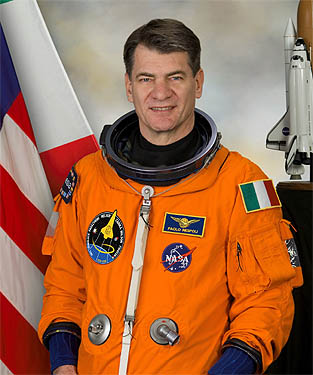
| Artwork |
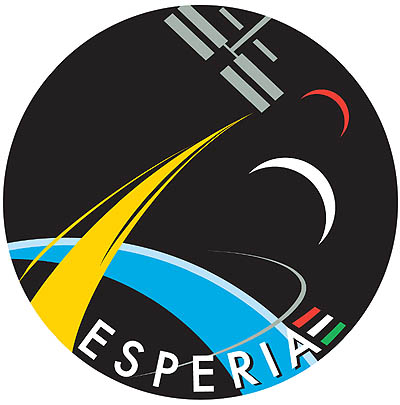
ASI entrusted the creation of a mission logo to world-famous designer Giorgetto Giugiaro and his ItalDesign SpA company under a sponsorship deal. The imaginative logo depicts how the Esperia mission is key to completing ISS assembly and also how it marks a step forward along the path of further exploration of space, an endeavour in which Italy and ASI are key players in Europe and in the international arena.
Mission Esperia Design Philosophy by Giorgetto Giugiaro:
When developing the graphic idea behind the esperia mission logo, coordinated by ASI, I pictured myself on board of a spaceship, orbiting around the Earth, observing the outher space from a spaceship window.
The comet represents the Space Shuttle cruising in space on its journey to the International Space Station establishing a strong and long-lasting tie. An imaginary bridge between Moon and Mars, between humankind and its greatest ambitions, between past and future of this incredible and fascinating human adventyre, where the planets are pictured by two half-circles in their usual colours: white and red.
Graphic is limited to the essential, simple, straightforward: easy to retain for the observer and mark his memory.
Objects in perspective ensure a tri-dimensional view of the scene.
The Italian nature of the event is embodied by the small Italian flag placed next to the esperia name.
| Why Esperia |
The mission has been dubbed Esperia from the Ancient Greek name for the Italian peninsula. The choice of name reflects how Nespoli's Shuttle mission to the International Space Station (ISS) will be a showcase for European technology, with the delivery of Italian-built Node 2. It also reflects the fact that this flight opportunity stems from the visionary involvement of ASI in providing three pressurised cargo containers (Multi-Purpose Logistics Modules, or MPLMs) to NASA under a bilateral agreement, with their development entrusted to Italian industry.
�Italy is one the main European players in space activities,� commented Simonetta di Pippo, Director for ASI�s space science and exploration (Osservazione dell�Universo) programme. �As the name suggests, the Esperia mission is an example of Italy�s long-term commitment to space exploration and of our vision and ambition for the future. It is also one more example of Italian industrial capabilities on which we rely to confirm our investments in European space programmes, in particular the Aurora exploration programme.�
| ESA-patch |
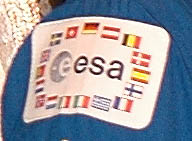
The "white"(?) ESA flag patch seen on Paolo Nespoli's suit.